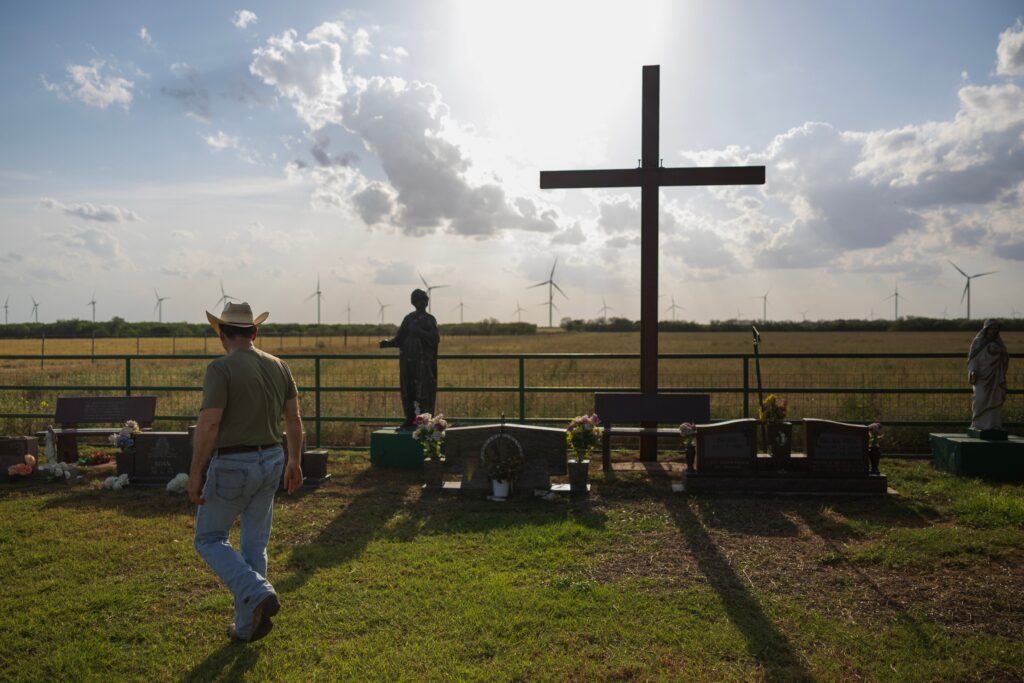What are the demographics of birth and death?
— N. Kabugu in Texas
Great question, Mr. Kabugu! Unlike much of Europe and East Asia, America hasn’t reached the point at which we have more people dying than we do being born.
At least not in the long run. We briefly blew past that point in a few winter months at the height of the covid-19 pandemic, according to our analysis of birth- and death-certificate data collected by the National Vital Statistics System.
Department of Data
We here at the Department of Data are dedicated to exploring the weird and wondrous power of the data that defines our world. Read more.End of carousel
That’s mostly past. Americans now die at rates similar to the trends we followed before the outbreak. But those trends weren’t all positive: we’re not far from the point where, each winter, deaths will regularly edge out births once more.
It’s a winter phenomenon because births tend to surge in August and slow to a crawl in February, while deaths — as we’ve previously found — soar in winter and slump in summer.
But that’s nationally. On a local level, deaths already outpace births in much of the country. Eager for insight into why, we mapped the birth-to-death ratio — and immediately got our answer.
Geographic patterns simply confirmed the least controversial principle in all of medicine: As we age toward retirement and beyond, we grow less likely to give birth and more likely to die.
The correlation between an area’s age and its birth-death balance looks nigh-on unbreakable. Maine, Puerto Rico, West Virginia and Vermont are all among the five oldest states (and territories) and the five states (and territories) with lowest birth-to-death ratios, Census Bureau data shows. The opposite end of the two metrics show even closer matches.
But the real thrust of Mr. Kabugu’s question — the demographic breakdown — draws us into a more fraught subplot.
If more deaths than births is America’s future, then for White people, the future was 2016. That’s when deaths of White adults passed births by White mothers. And the gap keeps widening. (Native Americans and Black Americans briefly saw deaths exceed births when they suffered disproportionately from the covid pandemic, but births are again on top.)
Some of that can be blamed on the culprit from our maps: aging. The typical White American has lived 44 years as of 2023, compared with 39 for Asian Americans, 36 and 35 for Black and Native Americans, 31 for Hispanic Americans and 27 for those of other or multiple races.
At first glance, you might think that then that, since older Americans tend to die more, rising deaths may be behind America’s falling birth-to-death ratio. After all, deaths have climbed 25 percent since 2008, while births are only down 13 percent.
But those are raw numbers.. When you adjust them to account for an aging population, deaths fell just 3 percent from 2008 to 2023, while births plummeted 24 percent.
More than three-quarters of Americans age 72 or older are White, while the same goes for fewer than half of Americans under the age of 18.
The same goes for young women — the demographic most likely to have kids — as we don’t see major age-and-gender gaps until women’s longer life expectancies come into play after age 50.
Our old friend Ken Johnson has spent almost two decades up in the white wilds of New England training for questions like these. The University of New Hampshire demographer is too modest to admit just how long he’s been researching American fertility trends.
When we tracked him down, he patiently explained a full answer would require, conservatively, “about four PhD dissertations and a major NIH grant or two.” He didn’t mention “newspaper column,” but we’re sure he was just about to.
He said that while the shrinking population who could have kids has certainly dragged on population growth — especially for White folks — the real culprit seemed to be that folks were simply having fewer kids.
“At first, I thought the decline in births early in the postrecession period were just delayed births,” Johnson told us. “I don’t think that anymore. I think there has likely been a generational change in attitudes about fertility.”
Among White American women, births have fallen about 19 percent from 2008 to 2023. How much of was just that Americans, collectively, are getting older? Well, if the population had aged but women had continued having kids at the same rate as they did in 2008, White births would only have fallen by 2.3 percent. (Other racial groups find even bigger gaps).
But age isn’t the only way the population has changed. And when we say “population,” what we’re really talking about is the cumulative effect of billions of life decisions made by hundreds of millions of people. And each of those life decisions can influence your family plans. Of those we measured, the biggest was marriage. Education also loomed large.
Shifts in either of those could change your child-rearing plans substantially. And boy howdy, have those factors shifted. For the first time in history, most American women ages 18 through 44 are not married, according to our analysis of the Current Population Survey’s fertility supplement.
White women haven’t quite passed the majority-unmarried point, but thanks to their immense gap in birth rates between those who are married and those who aren’t, it could still explain a significant share of the shift.
“Most of the decline is due to lower fertility among unmarried women,” Johnson told us. “And there are significantly more unmarried women in these age groups than historically.”
In related news, we’ve seen an almost-as-seismic rise in the share of women pursuing higher education. But given the fertility gaps in education are smaller, and the shifts smaller, it seems likely this is a secondary — and highly related — factor.
So, yes, deaths have passed births among America’s White population, and it’s happening alongside a nose-dive in nuptials. But we’ve got no idea whether that’s a cause or, more likely, a symptom of something deeper.
That deeper factor remains elusive. To be sure, we’ve already looked at the explanations for childlessness among millennials. That group in particular had the means to delay pregnancy — excellent, widely available contraception — and the motive — a housing and job market that puts out of reach many of the traditional prerequisites for starting a family.
But sleuthing out the possible culprits on a national level would require a whole new column. And by new column we don’t mean “next week’s edition of the Department of Data.” We mean “it’s a big enough bucket of worms that The Post would have to hire someone to write a dedicated Department of Data About Falling Marriage Rates.”
We wish them luck.
Hello, there! The Department of Data continues collecting queries. Tell us what piques your curiosity: When did men stop wearing hats? Are twin births still rising? Are small businesses less likely to hire remote workers? Just ask!
If your question appears in a column, we’ll send you an official Department of Data button and ID card. This week we’ll ship one off to Texas!
The post In these U.S. groups, deaths now exceed births. What’s happening? appeared first on Washington Post.




